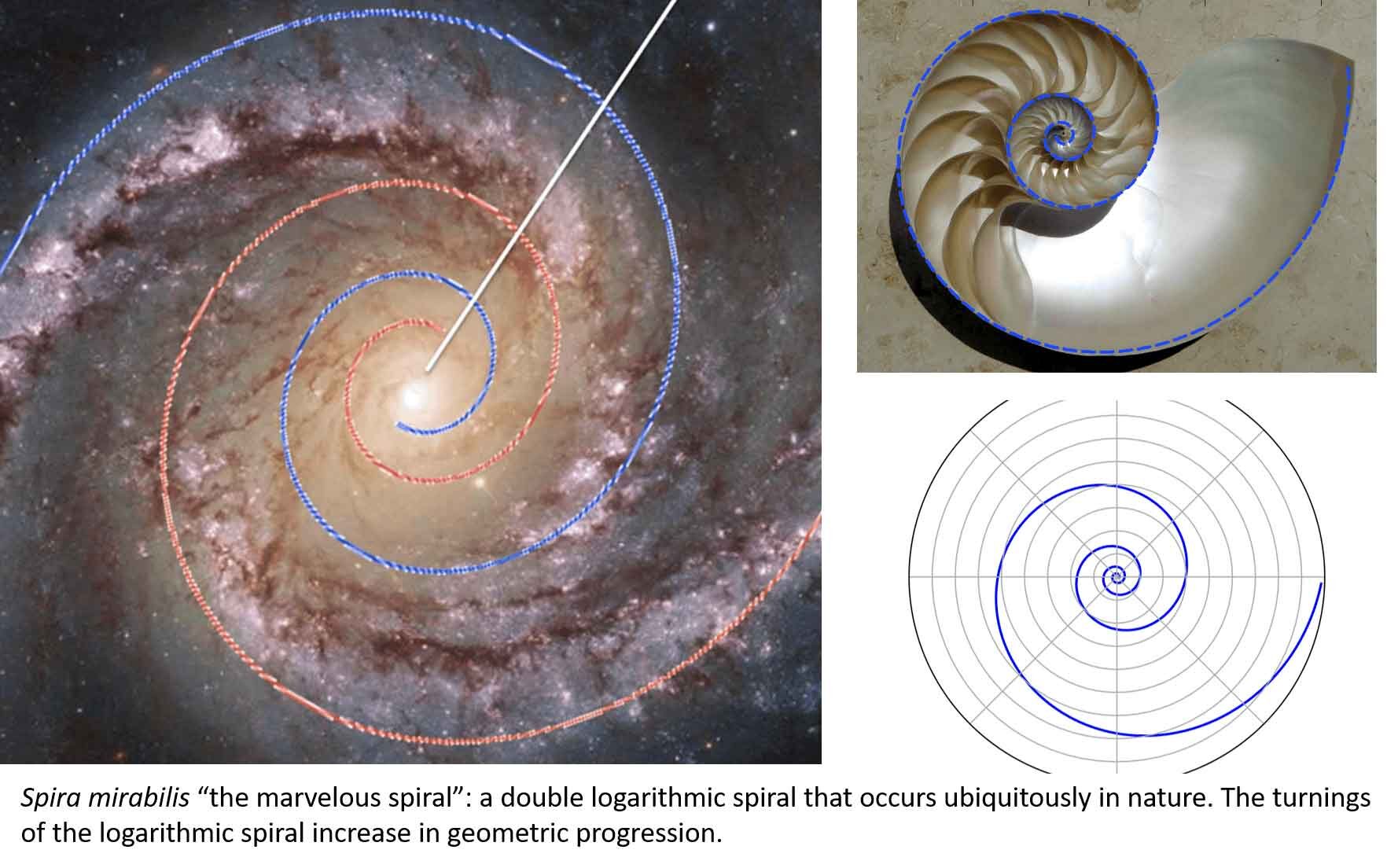Both of these systems are made of innumerable subunits (be they water molecules or stars and planets) which should behave completely oblivious to the overall configuration of the conglomerate. That is to say, the behavior of these systems at the scales that matter — the fundamental units of which they are composed — should be completely random aside from some formative causation arising from intermolecular or inter-gravitational interactions, which are not long-range.
The question then becomes what is the causative ordering parameters that results in chaotically interacting many-body systems coming together in spectacular symmetry and ordered geometrical configurations? The physics that describes the micro-scale ordering of a system is known as entropy, so obviously this is where we must turn.
When we talk about entropy, we have to remember that the idea of entropy was derived assuming an isolated or closed system where an increase of entropy is essentially an increase in the amount of "lost" energy. Thermodynamically speaking, the system will be tending towards a state of thermal equilibrium - a state where no more work can be done on the system, unless from external sources - this is the state of maximal entropy.
Historically, and even in some modern-day compelling theories, the causative ordering force was postulated to be a morphogenic field — a field that shaped the morphogenesis of objects much like a magnetic field would do to iron filings. Such a notion was swiftly dismissed by scientists as it was presumed to require some kind of magical force to exert the ordering influence, a force not known to physics.
Holomorphic Info-Entropy
Now, however, researchers Jeynes and Parker have mathematically described the morphogenic field and identified the force carrier — an entropic force. The researchers describe a new concept linking information and entropy together, through the system's elemental parts, in what they term holomorphic info-entropy — much like the linking of space and time into the unitary manifold of spacetime or electricity and magnetism into electromagnetism. And just like in the latter terms, where the change in state of one results in a change in state of the other — like coupled oscillating electric and magnetic fields — a change in information or entropy results in the same reciprocal influence.
We showed that entropy and information can be treated as a field and that they are related to geometry. Think of the two strands of the DNA double helix winding around each other. Light waves have the same structure, where the two strands are the electric and magnetic fields. We showed mathematically that the relationship between information and entropy can be visualised using just the same geometry.Using the info-entropy theoretic, the researchers studied one particularly prevalent geometric configuration, the double helix and double logarithmic spiral.
Chris Jeynes and Michael Parker
Their analysis shows that double helical and double logarithmic spiral trajectories in space-time are maximum entropy states. That is to say that among all possible ways the system can be configured, the spiral and double helix maximize entropy, and a system will always go to the state that maximizes entropy, making this configuration the most stable or equilibrium condition available to the system, and hence the ubiquity of these structures in nature.
Spirals Everywhere
The double helix is well known from the geometrical configuration of polymerized nucleic acids: the iconic DNA double helix spiral. Since the researchers had now devised a means to calculate the info-entropy of such a configuration, they used their method to calculate the exact energy difference between two configurations of DNA, the canonical B-form, and a less well-known yet still physiologically salient structure the P-form DNA. The P-DNA form is interesting in that each helical turn occurs each 2.62 bases, while in B-form each turn occurs every 10.4 turns. So, there is a lot of potential energy (info-entropy) stored in the P-form, and Jeynes and Parker were able to exactly calculate this energy difference, agreeing with the precise measurements of Bryant et al. (2003).
Holographic Temperature and Superfluous Dark Matter
Extending this analysis to an astronomically larger scale, the researchers then looked at spiral galaxies — noting that spiral galaxies are double spirals just as DNA is a double helix - mathematically speaking they have similar geometries.
"It is not surprising that the same entropic treatment applies from the nano-scale to the cosmic, since entropy is intrinsically scale-less."To test their theory, they started with our very own galaxy - the Milky Way - and set about calculating its mass.
Roger Penrose was able to show that the entropy of a galaxy is dominated by its central super-massive black hole. So, utilizing the famous Hawking and Bekenstein entropy equation, the entropy was calculated for the 4.3 million solar mass super-massive black hole. As discovered by Hawking, a temperature for the black hole event horizon was also calculated. The product of this temperature and the entropy can then be calculated as an energy, from which a mass can be determined using Einstein's famous equation.
According to Jeynes and Parker, if you can assign a temperature to the black hole event horizon, then it follows that you can assign a temperature to a galaxy surface horizon. Utilizing their holomorphic info-entropy equations, they calculated the galactic radius and what they term the holographic temperature. Now, with the holographic temperature and the entropy of the Milky Way, they were able to calculate its mass, which came out to approximately 0.94 trillion solar masses — remarkably close to the virial mass of the galaxy (about 1.3 trillion solar masses). Note that the observable mass of the Milky Way is only around 250 billion solar masses (give or take a 100 billion); however, the virial mass is the mass determined from the observed asymptotic velocity curve, which cannot be accounted for by the visible mass of the galaxy, hence the postulation of dark matter.
What their calculations show is that the postulation of dark matter (which has failed every attempt of detection) is superfluous. The entropic force that pushes the galaxy into a double logarithmic geometry is accounting for the additional energy causing the anomalous velocity profiles of galaxies. There is therefore a veritable morphogenic field that is the source of causative formation via an emergent entropic force.
"The stars in the galaxy are simply choreographed by an entropic force to line up into a pair of such spirals to maximise entropy."
RSF In Perspective This work follows a similar approach to the unified physics approach, which is essentially a scale invariant model from the quantum to the biological and the cosmological scale. Like the generalized holographic approach offered by Nassim Haramein, Jaynes and Parker see the entropy of the system as the guiding force behind the structure, size and mass of the system. In their work they are focusing on the surface entropy of a helical structure, where the size is governed by the changing volume relative to the Planck scale - not surprisingly they find a result approximately equal (differing by a factor of 5) to that found by Haramein's generalized holographic approach.






Reader Comments
~ Gator
Drum roll...
Evolution "theory" (cannot really get away with calling it evolution fact can we...)
Everything evolved...ta-da!
The "Oneness" of the cerebral cortex has now absorbed it's own Pineal gland, motioning its manifestation over the astral plane of vegan resonation.
Rock got bored of being inanimate mineral and sought solace in the concept of dreams and ambition!!
Go Rock!!
(Rock having the foresight of a Leopard which could change it's spots) wanted glamour and prestige....so it evolved into human life so humans could create a giant spinning disco ball that took the Rock's ego and creativity to manifest, escaping the residue of the human form because.....because all things evolve and are simply transitional, just like the theory theorizes..... baby!!
LOL
[Link]
Why should I mention that?
Well sat next to me on the kitchen windowsill is a Ammonite which I picked off the beach at Robin Hoods Bay quite recently, it's beautiful and very thought provoking.
Nature so complex and so misunderstood.
I doubt Mankind will ever understand the complexity of its creation, at least whist it thinks as it does.
In my view, we need to question science because it has been so manipulated to keep the public from understanding. The prevailing scientific materialism means everything happens by accident, entropy. If the theory of intelligent design is true, then we are observing design that was created.
Did they give us the left brain? Or was it simply divided? It's the obvious question I know, but it's time to ask it out-loud now without fearing being laughed at.
Because, low and behold - some people are asking it!
A great site and blog here - does it belong to anyone around here? [Link]
.
A place where people are asking: Left Brain Angels and Right Brain Gods, by Rod Tweedy, and: Milton’s Satan and the Fall of the Left Hemisphere, by Jordan Peterson.
Some other posts titles here:
The Shadow of Christmas, by Rod Tweedy
Angels in Blake, by Mia Forbes
Embodying Heaven: The Body in Blake’s Dante, by Silvia Riccardi
Blake and Zoroastrianism, by Mary Jackson
And here is the menu list:
Faces of Jesus
Jesus vs. Christ
Radical Jesus
Jesus and Nonviolent Resistance (Mental Fight)
Render unto Caesar
The Divine Arts
The Right Hemisphere
To See a World
R.C.